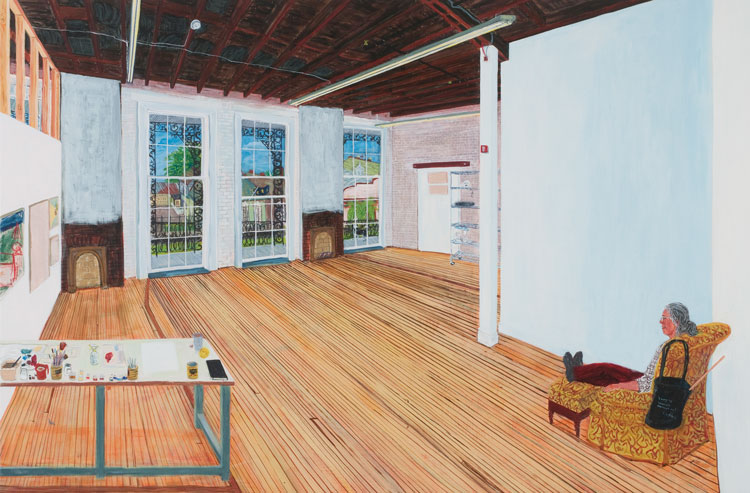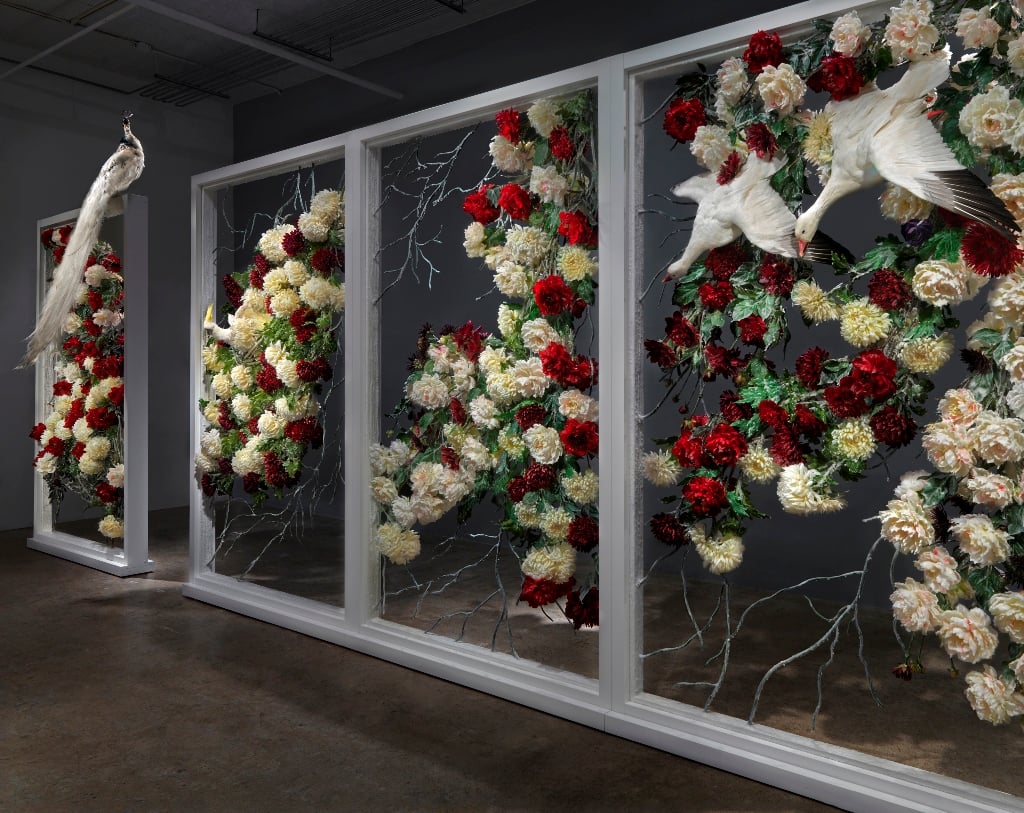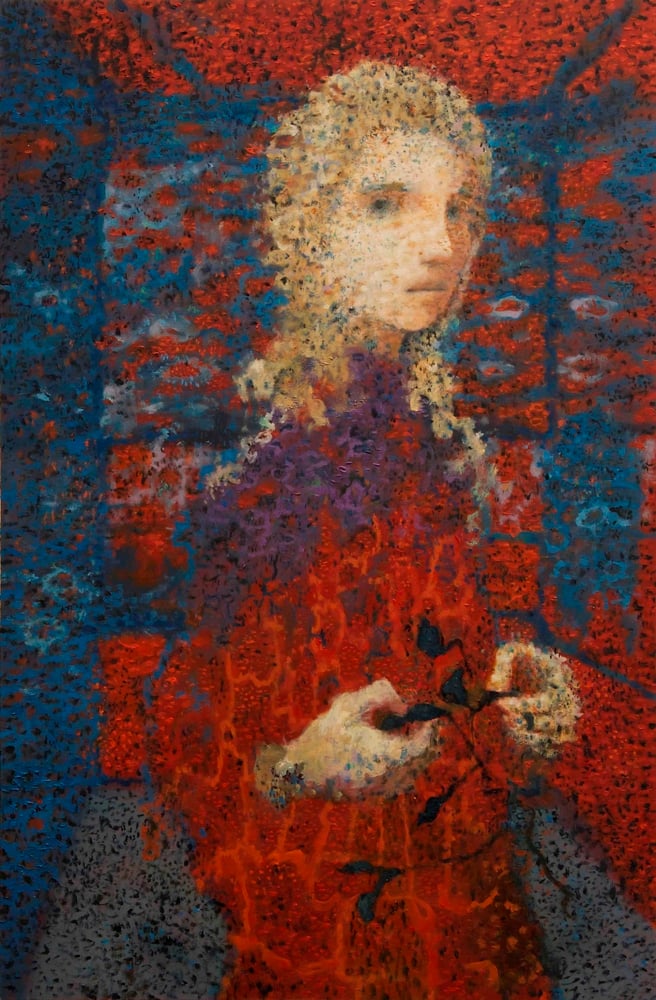Art Fairs
Emerging Artists Play Major Role at ADAA 2014 Art Show


Eileen Kinsella


Lee Krasner, Study for Mosaic at No.2 Broadway, New York (Broad Street Entrance) (1959), at Robert Miller Gallery. Oil and duck cloth collage on canvas. Photo: © 2013 Pollock-Krasner Foundation/Artists Rights Society (ARS), New York
Hours before crowds descended upon the Park Avenue Armory for the annual Art Show’s opening night gala on March 4, artnet News had the aisles and booths of the Art Dealers Association of America (ADAA) all to ourselves. This year’s edition offers an eclectic and wide-ranging mix of art, from 19th-century marble and bronze sculptures and Pop art prints to photographs and cutting-edge contemporary works. Best of all, the show’s neat rectangular layout and manageable roster of galleries—72 in all—ensures that you can take it all in without coming down with a serious case of art fair fatigue.
ADAA president Dorsey Waxter, overseeing her second show, explained that the goal this year “is to expand the audience.” Noting the competition posed by concurrent fairs such as The Armory Show, held at two piers on the far west side of Manhattan, along with roughly a half a dozen other satellite fairs throughout the city, Waxter said, “You have to be the best and the brightest to be able to attract people.”
Fair initiatives include collaborative events, such as a joint press conference at the Armory piers this morning (Wednesday March 5)—40 ADAA members are exhibiting at the piers, according to Waxter—cosponsored art panels, a partnership with Artsy to enable “virtual” visits to the fair, and a pop-up book shop installed by Brooklyn purveyors Spoonbill & Sugartown. The book shop offers publications about the artists whose works are on view and serves as reminder, Waxter said, that the galleries have “scholarly pursuits” as well as commercial ones. “I hope people will be surprised, she added.
To that end, one of the most arresting installations is also one of the first visitors will see upon entering the show, Petah Coyne’s wildly elaborate, booth-consuming installation at Galerie Lelong (pictured below). Untitled, #1388 (The Unconsoled), (2013–14), a lush, dark garden is made of clusters of wax-dipped flowers and taxidermied peacocks, cockatoos, and snow geese. The four-screen installation takes its title from Kazuo Ishiguro’s novel of the same name and reflects Coyne’s love of rich, natural imagery and Japanese literature.

Petah Coyne, Untitled #1388 (The Unconsoled) (2013-14). Silk flowers, specially-formulated wax, white pigment, paint, thread, wire,floral tape, taxidermy Silver Pied peacock, taxidermy Sulphur-crested cockatoo, taxidermy snow geese, steel, metal hardware, maple, birch plywood, aluminum.
Powerhouse gallery Pace presents a solo-show of works by light and space artist James Turrell, who dominated the art world this past year with a triumvirate of museum shows: at the Solomon R. Guggenheim; the Museum of Fine Arts, Houston; and the Los Angeles County Museum of Art. The Pace booth features eight dichromate reflection holograms in which the artist continues his exploration of the phenomenon of light itself.
Mitchell-Innes & Nash presents a solo show of kinetic sculptures by Sir Anthony Caro perched atop individual pedestals on a sparse, unfinished wood floor that stands out amid the carpeted booths throughout the rest of the Armory.
American art dealer Debra Force’s thoughtfully curated booth focuses this years on social commentary, including an early painting from Alice Neel, Uneeda Biscuit Strike, 1936, that will likely be a surprising counterpoint for those most familiar with her now iconic portrait paintings. In the 1930s, when the National Biscuit Company, producer of Uneeda Biscuits, sharply cut wages for workers in order to sustain dividend payments for shareholders, the moves sparked outrage and labor strikes at plants in New York, Philadelphia, and Atlanta. The particular painted scene, most likely on the streets of New York, shows a worker with a sign reading “Lockout Uneeda Workers.” Also hanging in the booth is a large work by WPA artist Philip Evergood, a sharp-eyed observer of race and class issues, as depicted in The Future Belongs to Them (1938-53).
Art dealer Nancy Hoffman focuses on the theme of ornament and ornamentation and is showing several large works by Robert Zakanitch, one of the “Pattern and Decoration” artists who came to prominence in the 1970s. The paintings here all part of a recent series inspired by the Hanging Gardens of Babylon. Zakanitch’s colorful paintings of cascading, delicately stylized flowers are hung alongside sculptures by Jesse Small, who mashes up style and content by casting the beloved robot toys of his youth in Chinese porcelain, posing questions “about what endures and what does not,” as the artist put it in a descriptive essay available in the booth.
By the end of the show preview last night, downtown gallery Eleven Rivington, which shared its booth with Van Doren Waxter, had sold out of all 10 new oil-on-aluminum figurative works by Spanish painter Jeronimo Elespe. Among the works sold were The Short Painter (2013), for US$17,000; R.M. (2014) for US$15,000, and Threads (2014) for US$7,000.

Jeronimo Elespe, R.M. (2014). Sold for US$15,000.
Photo: Courtesy of Eleven Rivington, New York.
At Tibor de Nagy, a solo show of Sarah McEneaney’s colorful paintings, “Recent History,” illuminates the booth and makes it another standout in this year’s excellent show, arguably one of the best yet.